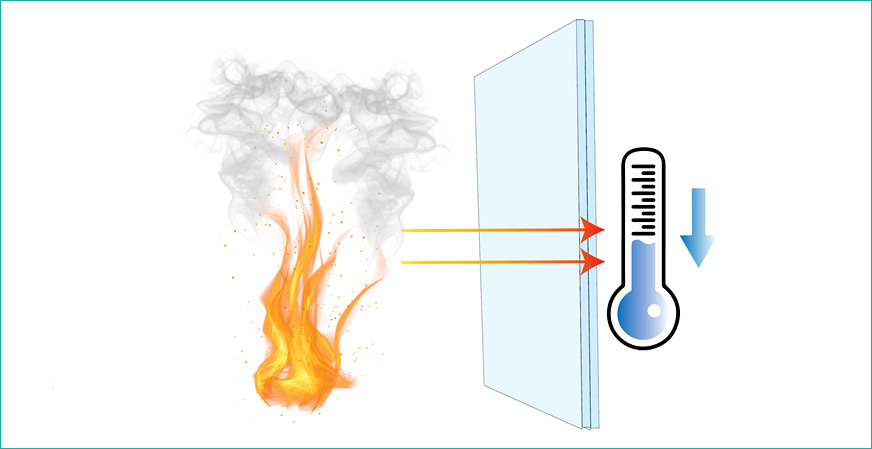1. Thermally Insulated Glass

Thermally insulated glass, also known as double glazing or double-pane glass, is designed to enhance energy efficiency by reducing heat transfer through windows and doors. It consists of two glass panes separated by a spacer, creating an insulating gap that can be filled with air or a low-conductivity gas, such as argon or krypton. The manufacturing process involves cutting the glass to size, assembling the layers with the spacer, and sealing the unit. The insulating gap and gas filling create a thermal barrier, reducing heat loss during cold weather and heat gain during hot weather. This technology works by minimizing the transfer of heat through conduction and convection, helping maintain consistent indoor temperatures and reducing energy consumption. Thermally insulated glass is used in residential and commercial buildings to improve comfort and energy efficiency, contributing to reduced heating and cooling costs while creating a more comfortable interior environment.
2. Cool Lite

Cool Lite glass is an advanced glazing solution designed to manage solar heat and light transmission, optimizing energy efficiency and comfort. It incorporates advanced coatings that selectively filter sunlight, reducing heat gain while allowing ample natural light. The manufacturing process involves depositing thin layers of metallic or metal oxide coatings onto the glass surface through a vacuum deposition technique.
Cool Lite glass functions by reflecting a portion of incoming solar radiation and absorbing another portion, thereby minimizing heat buildup within indoor spaces. This technology also helps in controlling glare and protecting interiors from potentially damaging ultraviolet (UV) radiation. By striking a balance between natural illumination and solar heat gain, Cool Lite glass contributes to improved energy efficiency, reduced cooling loads, and enhanced occupant comfort.
Cool Lite glass is widely utilized in commercial buildings, residential structures, and architectural designs that emphasize sustainability and energy conservation. Its ability to optimize light while mitigating excessive heat transmission makes it a valuable asset in achieving green building standards and creating environments that harmonize with nature and modern design.
3. Fire Rated Glass

Fire-rated glass is a specialized safety glass meticulously engineered to withstand exposure to fire and high temperatures while retaining its structural integrity. Its manufacturing process involves combining advanced materials and techniques to create a glass product capable of withstanding the challenges posed by fire emergencies.
The production of fire-rated glass typically begins with selecting tempered or heat-strengthened glass as the base material due to its enhanced durability. To provide fire resistance, a crucial step involves applying intumescent materials to the glass surface. These materials are designed to expand significantly when exposed to high temperatures, forming an insulating layer that protects the glass from flames, heat, and smoke.
The assembly process entails placing the treated glass into a specialized frame system that is also designed to endure fire conditions. The frame system helps retain the glass in place during a fire and provides additional structural stability. Sealants or gaskets are used to secure the glass within the frame while maintaining the fire-resistant properties of the entire assembly.
This combination of tempered glass, intumescent coatings, and robust framing results in fire-rated glass that can withstand intense heat and flames for a specified period, typically ranging from 20 minutes to several hours, depending on the specific fire rating requirements.
Fire-rated glass is used in various applications, such as fire doors, partitions, windows, and facades, where fire compartmentalization and safe evacuation routes are essential.
Fire-rated glass works by resisting the effects of fire, heat, and smoke, enabling crucial time for occupants to escape and firefighters to control the situation. Its ability to maintain its structural integrity during a fire allows it to act as a transparent barrier, preventing flames and smoke from spreading. This enhances overall fire safety and facilitates emergency response efforts. Fire-rated glass finds extensive use in commercial buildings, public spaces, and critical infrastructure, playing a vital role in safeguarding lives and property against the devastating effects of fire incidents.